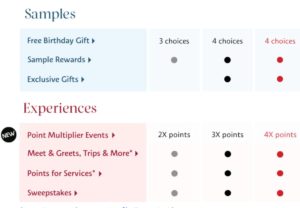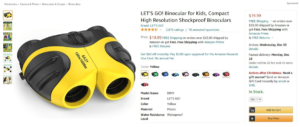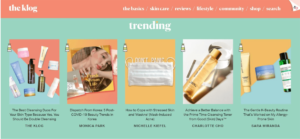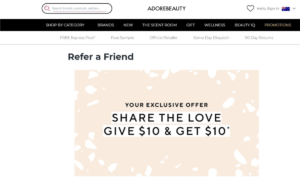Unhappy customers are a nightmare for businesses. We want our shoppers to love our products, patronize our brand, and make repeat purchases—but we can’t satisfy everyone.
Fortunately, keeping customers happy is not an impossible endeavor. To keep customers coming back, you can avoid a few mistakes and execute key marketing strategies.
Below, we’ll provide seven tips to help you avoid unhappy customers.
1. Collect customer feedback.
How can you improve your products? Why are customers not making repeat purchases? Customer feedback is crucial to uncovering problems and improving customer experiences.
In fact, a study found that only one out of every 26 customers complain. The rest will just keep quiet and move on to another business.
Lost customers mean lost profits. No customer experience is perfect. However, you can retain the ones you already have by simply getting their assessment of your business.
Create a survey with questions like “How can we improve our products?”, “How would you rate our product?”, “How would you describe your experience with our team?”. Just send it to your email subscribers—and you’re good to go.
Netflix’s customer feedback form encourages customers to rate their programs and films to further improve their experience.

While the survey may be short, it helps uncover valuable information about your services. Add open-ended questions to get their overall feedback or ask ratings for key aspects of your shopping experience. The information you get will be valuable to growing your business.
2. Customer service.
Responsive customer service is key to attracting and retaining your customers. Moreover, people crave omnichannel customer support as 90% of customers expect companies to provide good customer service on different communication channels.
Nextiva reports that 73% of customers believe friendly customer service representatives encourage them to stick to a brand. In addition, 96% of consumers believe it is an important factor that contributes to brand loyalty.
Every now and then, we encounter issues about products and services. Hence, businesses that can resolve customer complaints are likely to retain them in the long-run.
For your part, ensure customer support hotlines are available and visible to consumers. Respond to complaints or inquiries through email, social media, phone and live chat. Train customer sales representatives to identify needs and resolve issues in a respectful manner.
Alternatively, you can leverage chatbots that can send automated responses to inquiries. An interesting report by Backlinko revealed that 69% of consumers prefer to use chatbots because of the speed at which they can communicate with the brand.
3. No loyalty program
What if you could reward customers for their loyalty to your online store?
A report by Candybar revealed that 81% of customers are more likely to stay loyal to brands with loyalty programs.
Not surprisingly, consumers love loyalty programs. We all want to be rewarded for our repeat purchases through discounts, gifts and access to exclusive products. If we can get valuable rewards for patronizing our preferred brands, we’re also likely to stick with them in the long-term. As a result, brands that leverage loyalty programs are more likely to build a strong customer base.
For example, the Sephora Beauty Insider loyalty program has more than 12 million members, which contribute to a whopping 80% of the beauty giant’s annual profits. Members can earn exclusive perks like cash rewards, free samples, exclusive gifts, and even participate in point multiplier events.

But here’s the kicker: Sephora shoppers are likely to remain loyal because they can snag benefits which they won’t receive elsewhere. The prospect of earning points will also encourage them to spend more at your store because it can pay off in the form of discounts and gifts in the future.
4. Lack of online presence.
Due to the ongoing social distancing measures, social media use is on the rise. PwC found that 58% of consumers have increased their social media consumption in 2020.
On top of this, social commerce is estimated to reach $84.2 billion in 2024.
These numbers prove that a lack of online presence significantly contributes to a loss of sales. Plenty of shoppers discover new brands through their feeds or conduct research through the brand’s social media accounts. Without a website, people won’t discover your brand. Or even worse, current customers won’t be able to interact with your business or keep your products top of mind.
Denny’s Diner’s Instagram feed is filled with humorous posts which can make people laugh. As a result, every post gets thousands of likes and a lot of engagement.

By creating engaging content, Denny’s Diner is able to make their products memorable and make their followers smile. Plus, they can also encourage customers to snag their latest and classic menu items.
5. Lack of important information.
Customers that are interested in buying a product want a lot of information. They want to learn the product features, watch demo videos, or view high-quality photos. After all, they want to make sure that their hard-earned money will not go to waste.
That said, your website must have all the necessary information customers need. Create detailed product descriptions to make it easy for customers to make their purchasing decisions.
For example, Amazon’s product listings include detailed product descriptions, star ratings, customer reviews, product videos and related products.

Take it to the next level and publish detailed blog posts or guides which discuss the benefits of using your products. But it doesn’t end there. There are a number of ways you can use blog posts to make money that go far beyond talking about the features and benefits of your own products or services.
For example, Korean skincare brand Soko Glam runs a blog called “The Klog”. Here, they educate users about the benefits of specific skincare ingredients and share informative product reviews.

6. No referral program.
No referral program yet? You’re missing out on a big opportunity.
Think about the last time you learned about a new product or service.
How did you discover the brand? Was it recommended by your friends and family? Were you more likely to trust the referral because it was provided by a trusted loved one?
In a nutshell: This is the power of referral marketing.
People are more likely to trust referrals from their network rather than sponsored ads or branded webinars. Likewise, they love to talk about their favorite brands to ensure their friends and family have good customer experiences.
While referrals can happen organically, you can also gamify the process through a referral program.
For starters, referral programs incentivize customers to refer their friends in exchange for discounts, exclusive offers, or cash rewards. The more friends they refer, the more rewards they receive.
For example, Adore Beauty’s referral program lets brand advocates earn $10 when their referred friend makes a purchase. Likewise, the referred friend also gets $10 off their first order which encourages them to try out the brand.

By launching a referral program, Adore Beauty can reward brand advocates for promoting their brand and snag more customers with minimal effort. It’s a win-win scenario!
7. Not conducting market research.
How much do you know about your target market?
A lot of brands survive by simply selling their products with no research-backed information at all. But with the rise of online shopping, businesses must be able to gather site behaviour, demographic data, and psychographic data on their customers.
Otherwise, they won’t be able to effectively use their advertising and marketing budget. Imagine if a significant portion of your target audience was in Generation Z (age 8 to 23 years old). However, you weren’t able to resonate with this demographic because you kept targeting millennials.
Alternatively, understanding customer interests is also crucial when creating marketing campaigns. If you know your target audience’s interests, you’ll create effective campaigns that will get more people down the sales funnel.
That’s precisely why you should conduct marketing research by encouraging your customers to answer surveys. You can also use social media analytics tools to gain insights about your followers. But don’t forget to conduct market research on a quarterly or annual basis to ensure your data is timely and accurate.
How will you keep your customers happy?
There are a lot of ways you can keep customers delighted.
Launch a referral program and loyalty program to reward them for patronizing your business. Launch customer surveys and use analytics data to gather more information about your customers to create marketing campaigns that resonate with your audience.
Train your sales teams to be kind and courteous to shoppers. Also, ensure you have an online and social media presence to provide relevant information and ensure your product gets discovered.
Every effort counts, so making sure that you cover all these necessary bases.
How will your brand keep customers happy?




